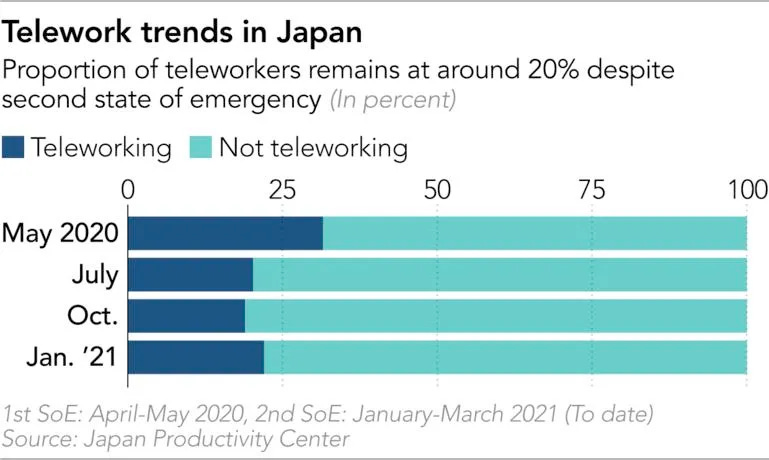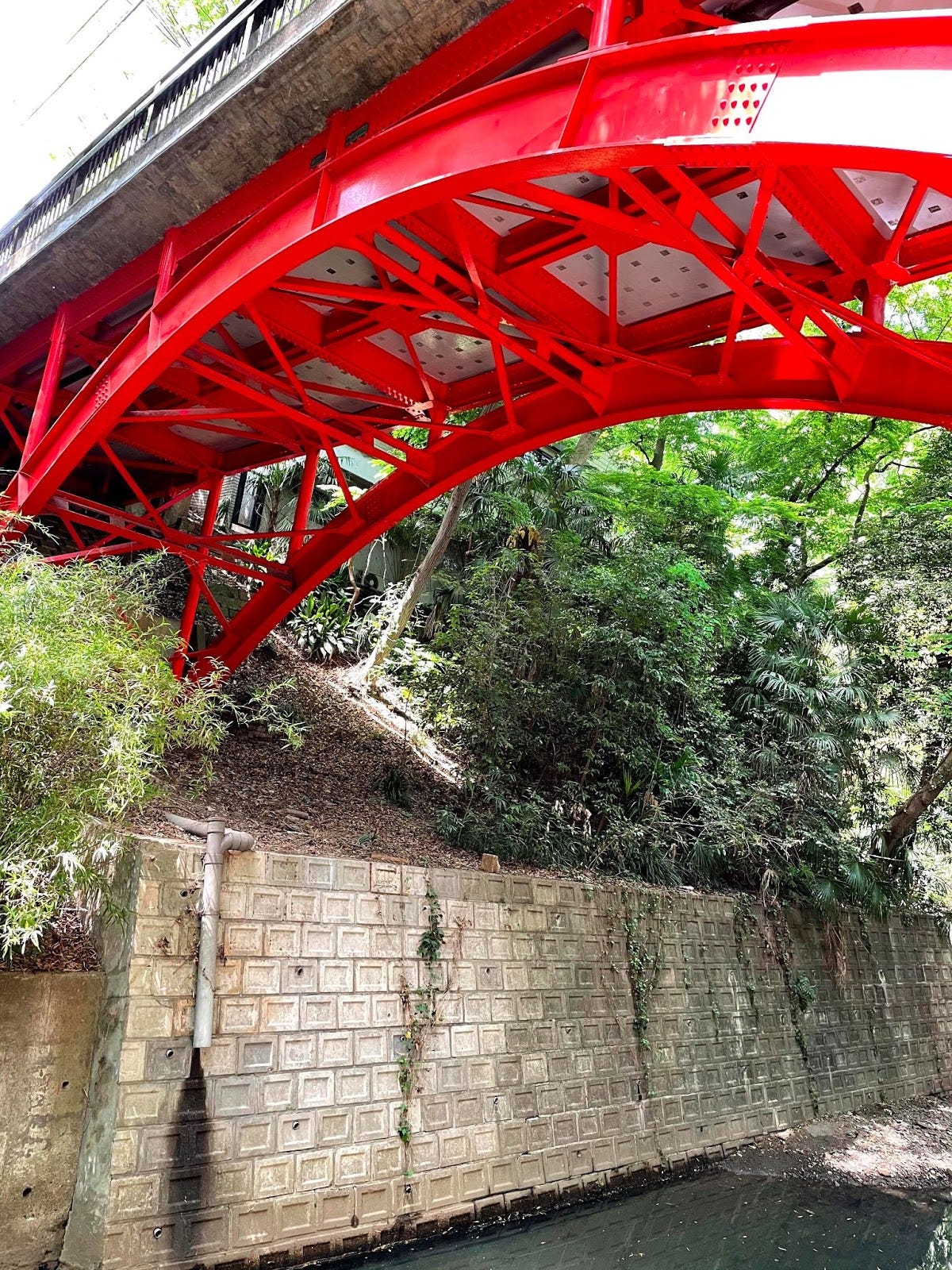Japan in 2021. Where are we?
Japan is stuck in the 1990's. Here's why Also, escaping to Tokyo's Todoroki Ravine Park.

Hello from Tokyo!
It’s hydrangea season!
Today’s article is a little longer and a bit denser. I thought it needed to balance out the konbini sweets from last week. If you don’t want to think much, then I suggest you scroll to the unsolicited recommendation section.
Japan is stuck
Japan has been stuck in the 1990’s for a long time. This is a strong personal opinion of mine, that has been informed by classes at university, reading, experience, and conversations with people smarter than me.
Long story short
After WWII, Japan grew its economy, rebuilt its country, and became the world’s third largest economic super power. Companies like Sony, Panasonic, Canon, etc. dominated the tech industry. But how often do you hear about those companies now? After Japan’s bubble burst in the 1990’s — now called the Lost Decade — the country hasn’t really recovered.
How did this happen?
Frankly, there were many factors contributing to the fall and the stagnation of Japan: intensifying competition, loss of favorable exchange rates (inflation), changing population demographics, etc. In my opinion, the main factor of why Japan hasn’t rebounded is because of a refusal — or lack of determination— to adapt in rapidly changing times.
Around 2008, China’s GDP surpassed Japan’s. By 2024 the World Bank and IMF predict that India”s GDP will have surpassed Japan’s as well. I could go on, but the point I am trying to make is that since the 1990’s, Japan hasn’t changed much:
economically…

…socially…
Japan consistently ranks near the bottom of gender gap reports. For instance, in the last twenty years, Japan has hardly made progress in the representation of women in national parliaments compared to its economic and regional peers.

…and its mentality
(the above is quite dense, so for now share the example of work from home below.)
30 years after the Bubble popped, the unfortunate devastation brought on by the COVID-19 pandemic has necessitated some measure of progress.
For example, cashless payments are becoming more common. It wasn’t until Corona that many documents were required paper format (in other words, electronically was not an option) started to be accepted digitally. The following below speaks for itself.
“As of the end of March 2019, Japan's Financial Services Agency required paper submissions for 1,612 of the 1,767 applications and filings under its purview. This meant an online option existed only for 8.8% of them.” - Nikkei Asia`2
It might seem odd that a nation with a historical reputation for strong innovation and technology is still so reliant on cash and paper. Still to this day, I cannot recharge my train card balance with a credit card at the station kiosk, nor can I buy stamps without cash. (I am forever very frustrated).

Work from Home
Obviously, this is a dense topic and there are many themes and ideas that could be expanded upon. However, for now, I would like to keep it simple and segway into the topic of Work from Home, “WFH”.
Recently, I was informed by my boss that starting in mid-June, I would be required to go to the office everyday (regardless of the COVID-19 situation). Why is this? Because, I am working on a project with the government. Which in case you do not know, is very old school. I like to joke that the government doesn't even know what Zoom is.
I have been fortunate to only have to go to the office 5 times since starting work on April 1st, and when I did, it was mostly voluntarily. However, in Japan, WFH is not as ubiquitous as other similar developed countries. Now in 2021, over one year into the pandemic, how does Japan rank with its shift to the “new” work style. Working from home, adding flexibility, let’s take a look.

Now, if you didn’t know anything about Japan’s economy, one could argue that Japan is a developing country, by which I mean, a larger part of the labor force needs to be in person to do their job (jobs in manufacturing, agriculture, etc.) as compared to the US and UK. However, Japan is obviously not a developing country, as evidenced by its economic achievement and standard of living, which is similar to the US and UK.
And that brings us to the topic of work from home. “Wait a minute, hold one,” you say, “Corona wasn’t that bad in Japan.” Yes, it could be that because the COVID-19 situation was not as bad in Japan compared to other countries; that it wasn’t as necessary to work from home in order to curb coronavirus infections. Despite this, based upon anecdotal evidence from friend’s and personal experience, I would like to argue that going to work in person is still seen as important in Japan.

“"People somehow feel compelled to come to the office even if it is unnecessary, if the company allows them to make their own choice" Yuji Kobayashi, principal researcher at Persol Research and Consulting, which specializes in human resources and work-style reforms, describes Japan's as "patchy teleworking." When companies have some employees who are working from home and others who aren't, teleworkers can feel insecure compared to those in the office.” —Nikkei Asia
It could be the social effects of collectivism or lack of digital infrastructure, but I have to go to the office next month for a new project with the government. Ironically, at the same time, the government is trying to digitize itself.
It’s painful to watch a country you love continue to slowly fall behind. Despite this, for some unknown reason I am slightly optimistic about Japan’s future. Perhaps, COVID is finally that push that Japan needs. It will be interesting (or disappointing) to see how things unfold in the following years.

unsolicited recommendation #6
Well that’s enough econ talk for now…time to cleanse your mind…
Say you’re in Tokyo and get a little tired of the concrete, and need a little bit of green to refresh yourself from the city.

Look no further than Todoroki Ravine Park (等々力渓谷公園). The park is located near the Tagami river, on the south-ish west, and about 15-20 min from Shibuya. It’s easily the most “outside” the city while still being in the city, if you know what I mean.

The park is fairly close to the train station and you enter by going down steps to the river. Once you’re down in the park, you really can’t see any signs of the city, except for the bridge.
It's a fairly small park, and its narrow path gives it character.

Like most natural environments in Japan, unironically there is a shrine, and a fairly nice one in my opinion.

If you walk from the train station, toward the opposite side of the park, there is an area with bamboo. Tis’ quite beautiful. It is the perfect spot to get your daily dose of nature.

Next time you’re in Tokyo and want to get away from the city, but don’t quite have the time, go to Todoroki Ravine Park. Skip the other big famous parks. While they’re nice, unlike Todoroki Ravine Park, they don't quite give you the nature you need.
If you made it through this post, I give you an extra thank you. Hope you found it mildly interesting. As always, feel free to reach out if you have any comments, questions, or suggestions.

